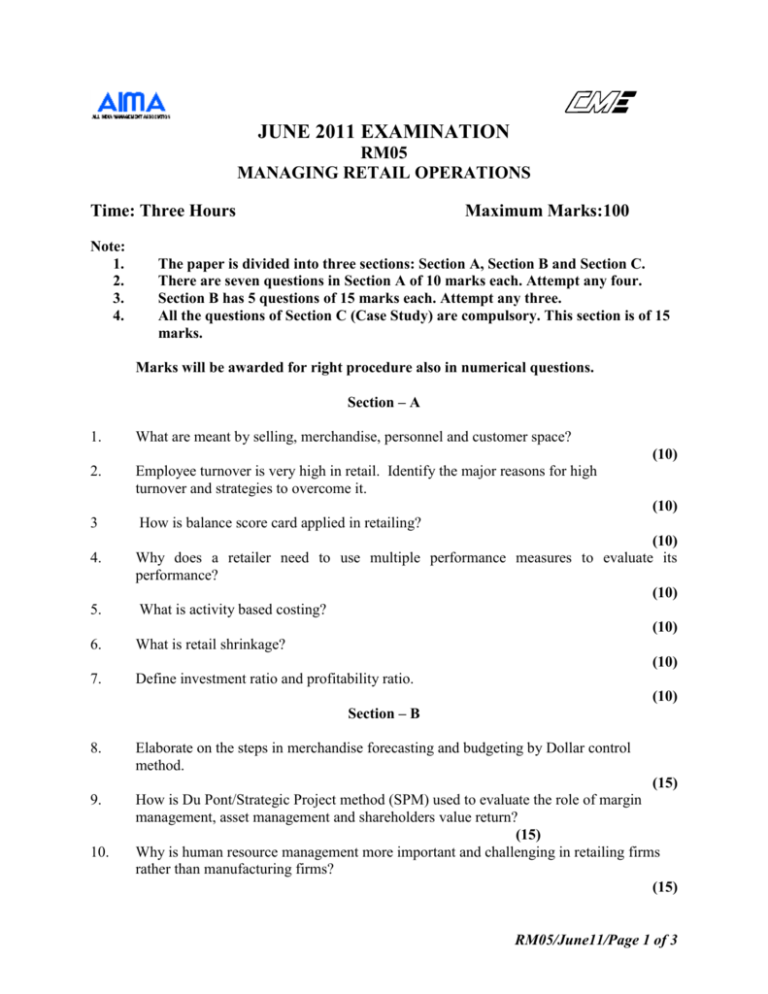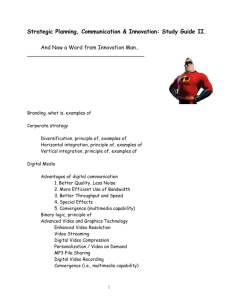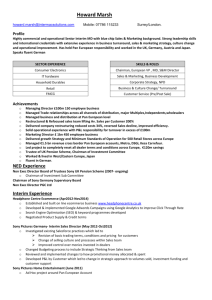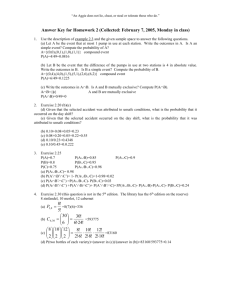RM05
advertisement

JUNE 2011 EXAMINATION RM05 MANAGING RETAIL OPERATIONS Time: Three Hours Note: 1. 2. 3. 4. Maximum Marks:100 The paper is divided into three sections: Section A, Section B and Section C. There are seven questions in Section A of 10 marks each. Attempt any four. Section B has 5 questions of 15 marks each. Attempt any three. All the questions of Section C (Case Study) are compulsory. This section is of 15 marks. Marks will be awarded for right procedure also in numerical questions. Section – A 1. What are meant by selling, merchandise, personnel and customer space? 2. Employee turnover is very high in retail. Identify the major reasons for high turnover and strategies to overcome it. (10) (10) 3 4. 5. 6. 7. 8. 9. 10. How is balance score card applied in retailing? (10) Why does a retailer need to use multiple performance measures to evaluate its performance? (10) What is activity based costing? (10) What is retail shrinkage? (10) Define investment ratio and profitability ratio. (10) Section – B Elaborate on the steps in merchandise forecasting and budgeting by Dollar control method. (15) How is Du Pont/Strategic Project method (SPM) used to evaluate the role of margin management, asset management and shareholders value return? (15) Why is human resource management more important and challenging in retailing firms rather than manufacturing firms? (15) RM05/June11/Page 1 of 3 11. Buyer’s performance is often measured by gross margin. Why is this figure more appropriate than net profit or loss? 12. a. b. (15) What are the responsibilities of a store manager? Discuss the need of performance management in retail organization and outline the criterion for evaluating the performance of sales associates/sales representative. (15) Section – C (Compulsory) 13. Case Study: Sony Looks to a Small Store Sony is now gearing up to sell its TVs, DVD players, and other electronics through a number of small company owned Sony Style stores. Since it began this strategy, Sony has opened more than 25, stores, with plans to expand significantly. While apparel manufacturers such as Coach Burberry and Ralph Lauren typically have hundreds of company-owned stores that compete with department and specialty stores, this strategy is uncommon for electronics manufacturers. Due to its belief that many conventional electronics stores do a poor job in demonstrating its goods to women, Sony plans to place stores in upscale shopping centers and central business districts. It will open stores near such female oriented firms as Sephora Tiffany and Louis Vuitton. Sony seeks out mall locations in the nation’s largest 20 markets and bids for the best locations in these malls. This locational strategy is in sharp contrast with that of large electronic stores such as Croma/NEXT), which are situated in smaller malls. Sony’s stores feature a concierge desk where each shopper is greeted. Aisles are designed to easily accommodate strollers. And unlike conventional electronics stores where competing brands are lined up in rows, each Sony model will be placed on a different stand. This gives consumers a better idea of what the TVs or home theatres will look like in their living room or den. And all TVs will be tuned into the Discovery Channel or to movie clips from Sony Corporation movies, not to sports channels. Sony’s newest strategy focuses on using small store formats. Its GKI, New Delhi, store is 6,000 square feet in size, this is about one-seventh the size of a typical Croma. The store carries a wide assortment, ranging from $20,000 televisions, but its selection is limited to about 18 different models of TVs, 15 computers and 12 camcorders. This strategy has created a significant concern among Sony’s traditional retailers. Many fear that Sony will become a direct competitor, as well as their supplier. These retailers are further worried that manufacturer retailer competition for the final consumer market will intensify as other electronics firms such as Panasonic and Samsung copy of this strategy. To reduce their concerns, Sony invites retailers that have near by stores to their newest locations prior to their opening. Sony has also undertaken marketing research studies showing that the RM05/June11/Page 2 of 3 new stores, by better educating customers about the features of a Sony model, increase the sales of all stores in the area. Some retail analysts, on the other hand, feel that Sony will probably take away sales more from smaller chains than larger ones. Sony claims that it is not trying to undercut its retailers and comparison shopping around a Delhi store confirms this. As an example, Sony’s price for a 42 inch plasma TV was Rs. 42,000 more than the price for the same set offered by a NEXT store located eight miles away. And Electronic Junction (leading Consumer durable store) prices were within Rs.300 of the Sony store’s prices for two DVD players. Questions: 1. 2. 3. 4. Identify the pros and cons of Sony’s small-store format. (2 ½ ) Should Sony use prototype stores? Should it use rationalized retailing? Explain your answers. (2 ½ ) Describe the pros and cons of a top-down space management approach for Sony, as well a bottom-up space management system. (5) Discuss the inventory management issues Sony needs to understand in managing its stores. (5) RM05/June11/Page 3 of 3




